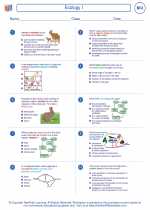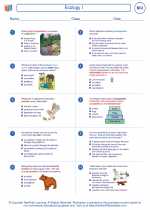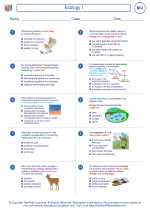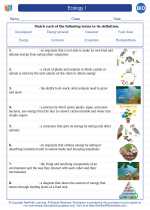Key Concepts in Environmental Sustainability
1. Natural Resources: These are the resources provided by nature, such as water, air, soil, minerals, and biodiversity, which are essential for the survival of living organisms.
2. Biodiversity: The variety of life forms, including different species, genetic variations, and ecosystems, that contribute to the stability and resilience of the environment.
3. Renewable and Non-renewable Resources: Renewable resources can be replenished naturally over time, while non-renewable resources are finite and cannot be easily replaced.
4. Ecological Footprint: The impact of human activities on the environment, measured in terms of the amount of natural resources used and waste generated.
5. Climate Change: The long-term alteration of temperature and typical weather patterns in a place, which is influenced by human activities and natural factors.
Importance of Environmental Sustainability
1. Conservation of Resources: By practicing environmental sustainability, we can ensure that natural resources are available for future generations and prevent their overexploitation.
2. Protection of Ecosystems: Maintaining a balance in ecosystems and preserving biodiversity is crucial for the stability of the environment and the well-being of all living organisms.
3. Climate Stabilization: Environmental sustainability efforts contribute to mitigating the impacts of climate change and reducing greenhouse gas emissions.
4. Health and Well-being: A clean and healthy environment is essential for human health, and sustainable practices can help in reducing pollution and promoting well-being.
Principles of Environmental Sustainability
1. Reduce, Reuse, Recycle: Minimize waste and conserve resources by following the principles of the 3Rs.
2. Renewable Energy: Promote the use of renewable energy sources such as solar, wind, and hydroelectric power to reduce dependence on non-renewable resources.
3. Conservation of Biodiversity: Protect and preserve the variety of life forms and ecosystems through conservation efforts and sustainable land use.
4. Responsible Consumption and Production: Encourage sustainable consumption patterns and promote the development of eco-friendly products.
Study Guide
1. Define environmental sustainability and explain its significance in the context of resource management and ecosystem stability.
2. Describe the concept of ecological footprint and its relevance in assessing the impact of human activities on the environment.
3. Discuss the difference between renewable and non-renewable resources, providing examples of each and their implications for sustainability.
4. Explore the relationship between environmental sustainability and climate change, highlighting the potential solutions to mitigate its effects.
5. Analyze the principles of environmental sustainability and their application in promoting sustainable development and conservation.
6. Evaluate the role of individuals, communities, and governments in achieving environmental sustainability goals and addressing global environmental challenges.
.◂Biology Worksheets and Study Guides High School. Ecology I

 Worksheet/Answer key
Worksheet/Answer key
 Worksheet/Answer key
Worksheet/Answer key
 Worksheet/Answer key
Worksheet/Answer key
 Vocabulary/Answer key
Vocabulary/Answer key
 Vocabulary/Answer key
Vocabulary/Answer key
